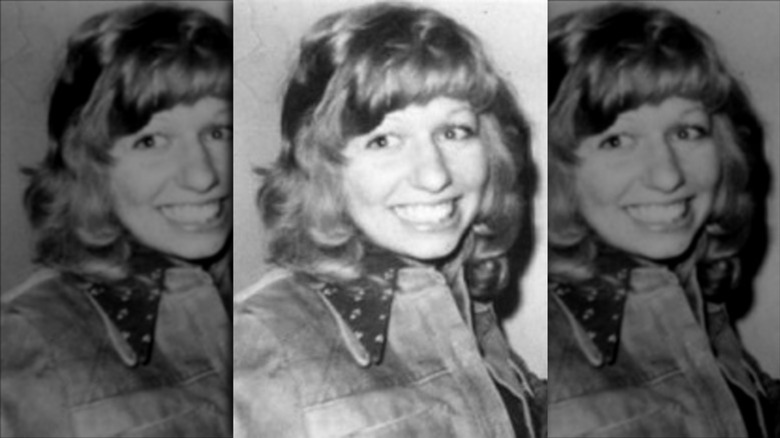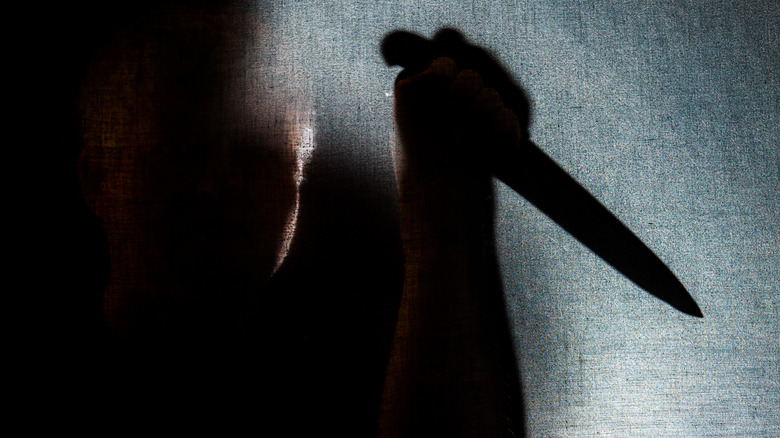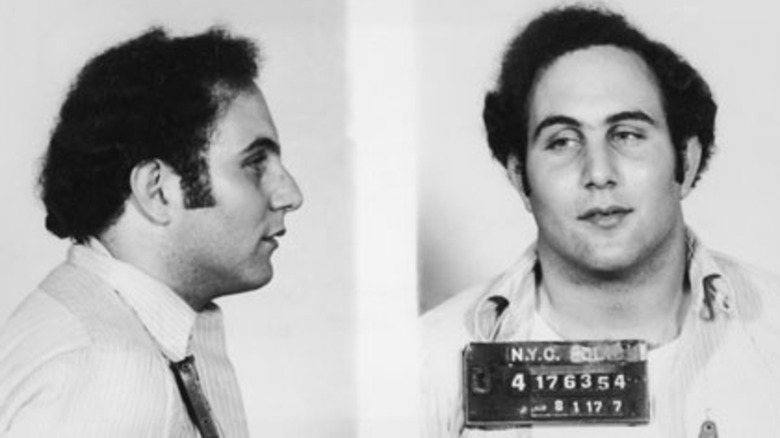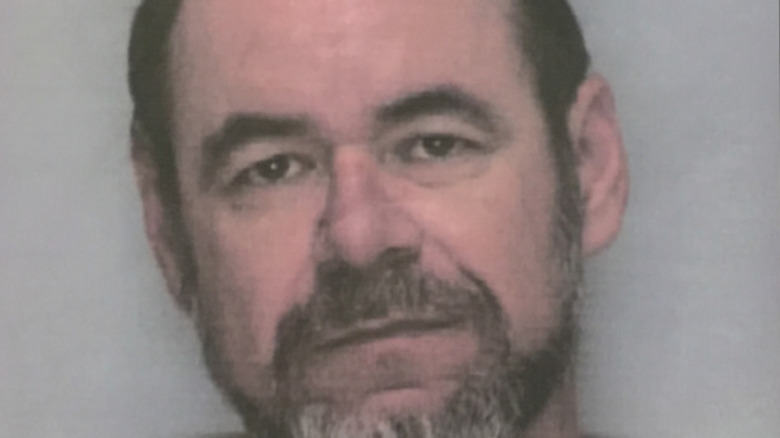These Stanford University Murders Were Linked To A Satanic Cult
Editor's note: This article includes descriptions of graphic violence and satanic imagery that many people find disturbing.
The 1970s might have been the prime decade for cults in America. Following the shocking Manson family murders in the late 1960s and the rise of other apocalyptic cults like the Peoples Temple and the Children of God, the general public was becoming increasingly more wary that dark and satanic forces may be lurking just out of sight. Perhaps understandably, a fear of cults was growing in the American psyche, and they found an outlet in the brutal murder of a young Stanford student named Arlis Perry in 1974.
Just six weeks before her death, the religious 19-year-old had married her high school sweetheart, a Stanford University sophomore named Bruce Perry, and moved into an apartment with him on campus. In the early morning hours of October 13, 1974, a campus security guard named Stephen Crawford arrived at the Memorial Church, where Perry frequently went to pray, and found the doors unexpectedly unlocked. Inside, he found Perry's half-nude body, laid out spread-eagle in a ritualistic fashion near the altar, with her right arm pinned below her waist. She had been gruesomely defiled with a candlestick, another candle had been inserted between her breasts, and her head had been split open with an ice pick, according to Palo Alto Online.
Arlis Perry's husband Bruce was cleared of any wrongdoing
The brutal murder shocked the Stanford community, who wondered who could have committed such a sadistic act against the young woman. As one might expect, the police immediately turned to the new husband, Bruce, as their main suspect. He admitted that the couple had argued the night of October 12, which ended with Arlis going to Stanford Memorial Church to pray around 11 p.m., while he returned home to study and sleep. Around 3 a.m., when she still had not arrived back home, Bruce became worried and alerted the Stanford authorities, per Palo Alto Online.
Bruce Perry was cleared of wrongdoing after he voluntarily submitted a DNA sample to the police, which did not match DNA that had been found at the crime scene. Furthermore, nothing seemed to explain the strange and sickeningly violent nature of the crime. Because of the bizarre, ritual-like arrangement of her body, as well as its location inside a church, it didn't take long for rumors to swirl that Perry's death was the work of a satanic cult.
A string of murders had been plaguing the Stanford University campus since 1969
These rumors were fueled in no small part by the fact that Arlis Perry's death was the fourth killing in a string of unsolved murder cases that had taken place on Stanford's campus in the year and a half prior. Speaking to the press two days after the discovery of Perry's body, a Santa Clara County spokesperson assured the public that the murder was "definitely a sex crime," with no evidence of a "ritualistic 'black mass' slaying." Yet, suffice it to say, the public was not necessarily convinced, via Stanford Daily.
Indeed, strange and violent murders seemed to have been haunting the campus since the turn of the new decade. In 1969, a physician from the Medical Center named Leslie Kulhanek was shot dead by a co-worker in an apparent feud over Kulhanek's wife. In 1973, a Stanford graduate student named Leslie Marie Perlov had been found strangled with her scarf in the foothills behind the university campus, according to the Stanford Daily. In May 1974, just months before the Perry murder, another young woman was found strangled in a similar manner. Janet Ann Taylor, the daughter of Stanford University's former athletic director, was found strangled behind campus, near the intersection of Mayfield Ave. and Junipero Serra Blvd., with her shoes and purse missing.
A physics student's murder may have been the work of the satanic Death Angels group
On September 11, 1973, physics student David Levine had been slain in front of the Meyer Library sometime between 1 a.m. and 3 a.m. His body was discovered with around 15 stab wounds in his chest and back, committed with a long blade. His death brought on speculation that a so-called satanic group known as the Death Angels may have been responsible for the murder, per Stanford Daily.
Police soon began to wonder if there was a link between Levine's death and the murder of a chemistry student at nearby UC Berkeley named Eric Abramson, who was killed that December. Like Levine, Abramson had been stabbed in the chest and back multiple times with a knife that had an 8- to 10-inch blade. Both stabbings occurred at night in the weeks between academic quarters, and robbery was determined not to be a motive in either case. Campus officials began encouraging students to use "precautionary measures" if they were staying late on campus, due to the "very similar" nature of the two cases, according to Stanford Daily.
The Son of Sam claimed to know who killed Arlis Perry
When the Son of Sam killer David Berkowitz mentioned Perry by name in a correspondence sent from prison to Lieutenant Terry Gardner, a deputy sheriff in Ward County, North Dakota, it seemed more likely than ever that something dark and satanic was at work in the Perry case. Gardner had been investigating the death of John Carr, Berkowitz's former neighbor and possible accomplice, who turned up dead under suspicious circumstances in Minot, North Dakota in 1978, according to The New York Times. Berkowitz sent Gardner a copy of the book "The Anatomy of Witchcraft," with the words, "Arlis Perry, hunted, stalked, and slain. Followed to California. Stanford Univ," scrawled inside the margins, according to PopSugar. He later claimed that he knew who was responsible for the slaying of Perry, who was a North Dakota native.
Journalist Maury Terry and some others involved in the Son of Sam investigation had been digging into the theory that Berkowitz had not acted alone, but was involved with a satanic cult known as the Process Church of the Final Judgment. Berkowitz's message provided a link between the Son of Sam shootings and Perry's murder, further fueling speculation that Perry's murder had connections to the occult.
Perry's murder was finally solved in 2018
In 2018, the gruesome Perry case was finally solved using DNA evidence. According to Inside Hook, cold case investigators were able to definitely link Stephen Crawford, the security guard who had discovered Perry's body, to the murder. However, when authorities arrived at Crawford's house to apprehend him, the 72-year-old shot himself with a revolver.
While the mystery of who killed Arlis Perry may finally be closed, questions about Crawford and the other strange murders still linger. After Crawford's suicide, many people were left wondering if Perry was the only murder that he was responsible for. The shockingly brutal nature seemed to indicate that Perry's murder may not have been his first crime, and in the 44 years it took to tie Crawford to the crime, one can't help but wonder if he continued to kill others in that time. Additionally, not every Stanford University victim has been able to have their case laid to rest. The murder of David Levine remains unsolved to this day.





